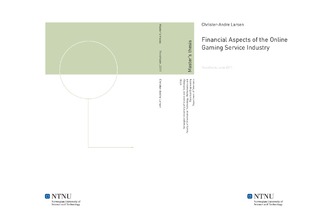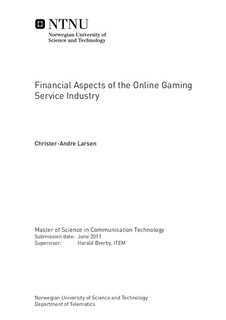| dc.description.abstract | The goal of this thesis is to identify and analyze the dominant revenue models in the OGS industry, as well as the logic behind the choice of a specific model. Identification of the prevalent models and their characteristics would in conjunction with results from previous research in the field provide a complete overview of the financial aspects of OGS operation.The goals of this thesis was reached through an analysis of the business model of Microsoft s Xbox LIVE (XBL) service, one of the leading console platform OGSs, in conjunction with a similar case study of Blizzard Entertainment s Battle.net service presented in former work by the author. Both case studies include all aspects of the business model, according to the business model ontology defined by Alexander Osterwalder in his PhD dissertation.The five identified dominant revenue models are the subscription, advertisement, micro transaction, digital distribution and additional sales model. From the provided estimates, the subscription, micro transaction and digital retail model are the most profitable among the five as standalone models. However, the study has shown that most successful OGSs utilize several revenue models in conjunction in order to reduce the negative effects associated with each one individually. In addition, the use of several models improves price differentiation possibilities, which in many cases may lead to increased revenue. While the pricing strategies among the services are many, the specific implementations of the dominant models among the studied services imply that the willingness to pay among OGS users are low for features and content not personally valued by each individual user.The general cost structure of OGSs has also been updated with additional results uncovered through this research. For an OGS relying on micro transactions and digital distribution for revenue, this study has shown that the bandwidth and support costs increase substantially compared to a service without digital distribution, even outgrowing the hosting costs for the service itself. Thus, favorable partnerships and other means to reduce bandwidth costs may be seen as equally important cost saving initiatives as those outlined in former work. | nb_NO |

